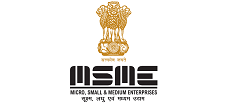ITSM-IT Service Management
The main objective of ITSM is to improve the quality of IT services, reduce costs and ensure that IT services are delivered in a timely and efficient manner. ITSM also helps to align IT services with business objectives, which is important for the success of any organization.
IT Service Management (ITSM) refers to designing, delivering, managing, and improving the IT services provided to customers or users within an organization. It is a set of best practices and frameworks that ensure that IT services are aligned with business needs and delivered efficiently and effectively.
The main objective of ITSM is to improve the quality of IT services, reduce costs and ensure that IT services are delivered in a timely and efficient manner. ITSM also helps to align IT services with business objectives, which is important for the success of any organization.
The following are the key components of ITSM
The following are the key components of ITSM
Service Strategy
This component involves the development of a service strategy that aligns IT services with business objectives.
Service Design
This component involves designing IT services to meet business and customer requirements. It includes the design of service level agreements (SLAs), IT infrastructure, and service catalogs.
Service Transition
This component involves the transition of IT services from development to production. It includes the testing, training, and deployment of IT services.
Service Operation
This component involves managing IT services in a live environment. It includes monitoring, reporting, and resolving incidents, problems, and changes.
Continual Service
Improvement: This component continuously improves IT services through metrics and feedback.
ITSM is a holistic approach that involves the entire organization, not just the IT department. It requires the involvement of business stakeholders, IT staff, and service providers. ITSM also involves the use of specialized software tools that automate the management of IT services.
ITSM frameworks such as ITIL (Information Technology Infrastructure Library), COBIT (Control Objectives for Information and related Technology), and ISO/IEC 20000 provide guidelines and best practices for implementing ITSM. These frameworks provide a structured approach to ITSM and help organizations to achieve their business objectives.
Conclusion
ITSM is an essential practice for organizations that rely on IT services. It helps to align IT services with business objectives, improve service quality, and reduce costs. By implementing ITSM frameworks and best practices, organizations can ensure that they are delivering high-quality IT services that meet the needs of their customers and users.
Witness the power of leading edge technology with our proven, workload optimized best IT solutions & services that are scalable, resilient, and yet cost-effective.
Being associated with our tech partners, we assure to provide well-integrated solutions to assist organizations with proactive monitoring of their whole IT infrastructure.




















